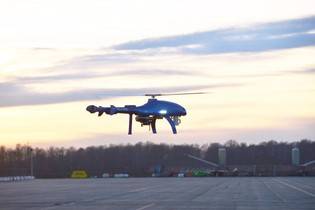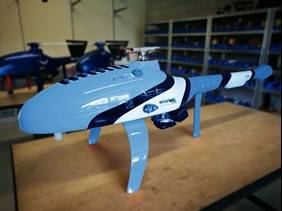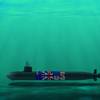Global maritime technology innovator Martek Marine said it has been included on a framework contract by the European Maritime Safety Agency (EMSA) for remotely piloted aircraft systems (RPAS) services in the maritime environment.
EMSA was established for the purpose of ensuring a high, uniform and effective level of maritime safety and prevention of pollution by ships.
Due to the recent entering into force of the new limits for sulphur content of marine fuels since January 1, 2015, Directive (EU) 2015/253 of February 16, 2015 laying down the rules concerning the sampling and reporting under Council Directive 1999/32/EC as regards the sulphur content of marine fuels, SOx emissions from ships need to be monitored. The enforcement by Member States under Directive 1999/32/EC (as amended) will require monitoring of the emissions and information exchange between the responsible administrations.
To improve environmental surveillance capabilities, data from new sensors, in particular from RPAS, are to be incorporated to provide information to Member States. EMSA will organize and provide, as an institutional service provider, pilot RPAS service operations in support of Member States focusing on marine pollution detection and monitoring and emissions monitoring. However, this technology has a multipurpose character and could in an emergency be used for other purposes, if necessary or requested by Member States, the European Commission and other EU agencies.
Martek Marine has been awarded one of several framework contracts launched by EMSA which deals with “Remotely Piloted Aircraft System (RPAS) services in the maritime environment”. The contract won by Martek is specifically for ship engine emission monitoring by RPAS. This new requirement requires an RPAS (drone) to sample gases from a vessel’s emissions plume by using a sophisticated payload of electro optical, infra-red imaging, gas emission and AIS detection sensors.
The RPAS can be flown over 50 km from the ground station with instant and continuous video being streamed back to the ground station and Member States. An on-board gas analyzer draws samples of air and monitors SOx, NOx and CO2 levels to determine possible breaches in EU law on the sulphur content of a ship’s fuel.
Martek Marine has developed a team of technical experts, experienced pilots and a bespoke maritime unmanned helicopter specifically adapted to suit this application. The RPAS can operate over 50 kilometers away from the ground station, beyond visual line of sight (BVLOS).
Development is also underway to incorporate satellite command and control and payload data streaming, so the RPAS can operate in what is known as BRLOS (beyond radio line of sight) over 100 kilometers away. In order to operate effectively in the harsh maritime environment, the RPAS can withstand storm force wind and heavy rain, snow and salt spray.















